Y-12 Blog
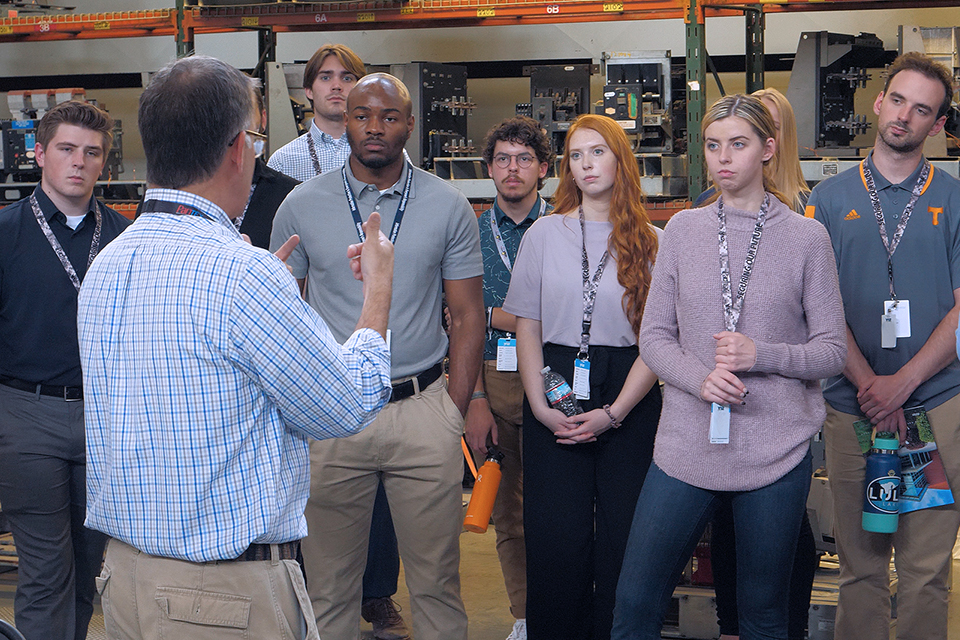
Senior Director of Communications Jason Bohne explains facets of the Y-12 mission during a site tour for new summer interns.
The CNS summer interns have arrived to begin learning and working in organizations across Pantex and Y-12. A total of 52 interns, 35 at Y-12 and 17 at Pantex, began their summer with an orientation. Cristy Landrum, who coordinates the internship program at Y-12, said the interns represent 20 universities and 11 states, ranging from Florida to New Mexico. Of course, most hail from Texas and Tennessee, 18 and 25, respectively.
Chief Human Resources Officer Diane Grooms told the Y-12 interns that they should feel proud to have been selected from among 1,000 applicants. The internship program is integral to CNS’s recruitment efforts.
“The goal here is to see how you do,” Grooms said. “If you like us and we like you, we hope to hire you one day.”
Grooms asked the group, who got up at 4 a.m. that day, to get ready for the start of orientation at 6 a.m.
Alexander, a junior studying nuclear engineering at the University of Tennessee, raised his hand, saying he plans for the worst and needed a coffee, which drew a laugh from the group. At 28, he already holds a degree in political science from the University of Michigan, but wants to focus on nonproliferation.
“Policy and history are interesting, but this is more of a hands-on experience,” Alexander said.
Joshua, a senior studying finance and management at West Texas A&M University, is joining Pantex’s Operations Support in Project Controls. He said his duties align closely to his studies, thanks to careful matching by his Pantex internship coordinator Zuleyma Carruba-Rogel.
“Executing the internship program requires yearlong coordination efforts, which all come together when those students take their first seat at New Employee Orientation,” she said. “Their enthusiasm, inquisitiveness, and eagerness to learn is infectious.”
Joshua said he has worked several unrelated jobs to help pay for college and is happy his internship role mirrors his studies.
“I’m most excited about gaining an entirely new, professional skill set,” Johsua said.
Riley will be a senior at the University of Tennessee studying business analytics. Her father also works at Y-12. Her internship in Occupational Health Services might not seem like a good match. However, OHS's Gary Hall and Karen Lacey jumped on the chance to have Riley analyze CNS's COVID-19 database to study now the sites dealt with the pandemic. While making sure Riley’s experience is enriching, Hall said a secondary goal of the program is producing value for the organizations.
“I’m really looking forward to getting into the data and being able to showcase how well OHS has been handling Y-12’s employees’ safety during the COVID-19 pandemic,” she said.
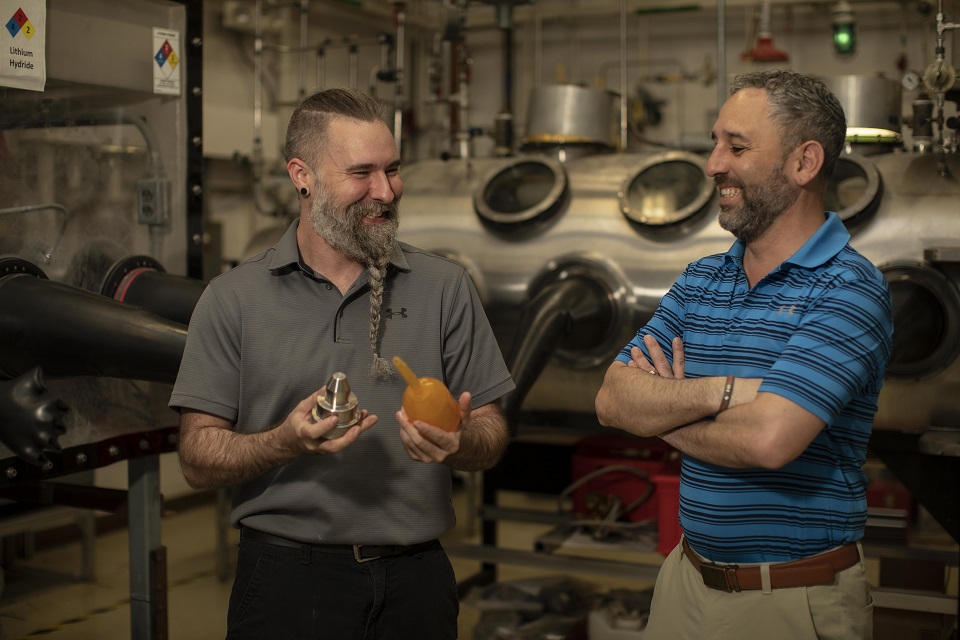
Mike Ellis (right), a 20-year Y-12 employee, is the new program manager for Y-12’s Plant Directed Research and Development program and is acting in the same role at Pantex. Ellis and Elijah Barlow (left) discuss a process being investigated for use with Y-12’s lithium stream.
It’s not easy to replace someone who retires from Pantex or Y-12 and takes with them multiple years of knowledge, but retirements happen and Consolidated Nuclear Security invests significant time and energy in Knowledge Preservation Management. Since February, two long-time leaders have retired from the Plant Directed Research and Development (PDRD) program, taking almost 80 years of combined history with them. Y-12’s Eric Larson retired in February, and Pantex’s Gregg Chambliss retired in May, but the future remains bright for PDRD.
Mike Ellis is the new Y-12 PDRD program manager and is acting in the same role at Pantex until Chambliss’ replacement is named. “I am fortunate to know Eric and Gregg as colleagues and friends,” Ellis said. “I had the opportunity to talk to Eric about the program, what was ahead, and our current portfolio (that includes 102 projects across both sites). I also have talked with and learned from Gregg. It was good to have that opportunity.”
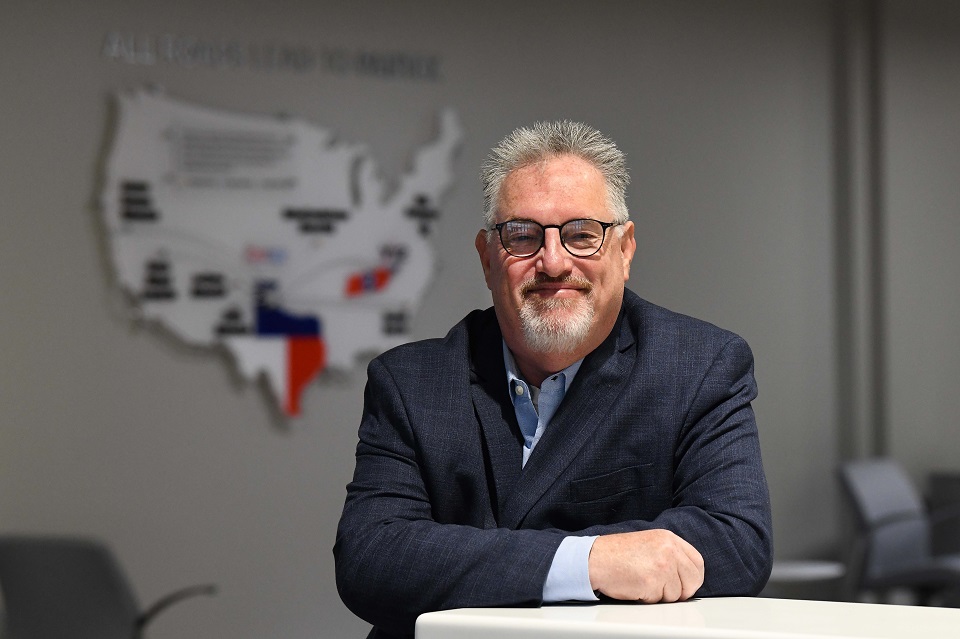
Pantex’s Gregg Chambliss is now a retiree, but he has great expectations for the Pantex and Y 12 Plant Directed Research Program he leaves behind.
Chambliss, who had been the Pantex PDRD program manager since 2013, was happy to share his wisdom with Ellis, and has great expectations for the team. “Through PDRD, Pantex has been able to develop and replace obsolescent technologies that in some cases had gone far beyond the original life expectancy. It has been exciting to see numerous inventions submitted by Pantexans. Many of these have moved toward the possibility of becoming intellectual property or patents.”
Marina Yeary, director of Technology Development and Transfer, the organization under which PDRD falls, said, “PDRD develops technology solutions through research and development to meet current and future mission needs. The program provides a unique avenue to explore innovative scientific, engineering, and manufacturing ideas identified by site stakeholders — our employees.”
The impact of PDRD
PDRD touches many organizations and areas at the sites, including external partnerships. Grant Allard, program manager of Partnerships, said, “University and industrial partners are important resources for Pantex and Y-12 PDRD projects because they bring new ideas, novel resources, and world class expertise in supporting PDRD's mission of ensuring the sites’ technological and workforce vitality. Our higher education partners positively impact our vital national security mission by providing support to PDRD projects that cover every aspect of our sites, including how we process material streams that support operations, transform and maintain our infrastructure, enhance our global security and nonproliferation capabilities, and digitally transform to enable data driven operations.”
One such development Chambliss saw during his tenure was the Computer Numerical Control/Controller Mill Lathe Machining Center.
“This new machine was designed by Pantexan Jeff Yokum,” Chambliss explained. “He worked with the vendor to finalize the ‘build.’ This new capability revolutionized the way we machine high explosive billets, as well as minimized the footprint for this machine.”
The CNC replaced several different machines that do the same tasks, but it operates in a safer manner. Chambliss said, “It minimizes the technician’s handling of the product, and the machine also solved a production bottleneck within the machining workload for the High Explosives Manufacturing organization.”
One Y-12 example Ellis shared is the electrorefining technology that was introduced with thePDRD program in 2008.
“The Development organization has great researchers at both sites who work closely with the PDRD team and executing organizations. Communicating and understanding upcoming needs are top concerns, so we work to hire the right people for what we need,” Ellis said.
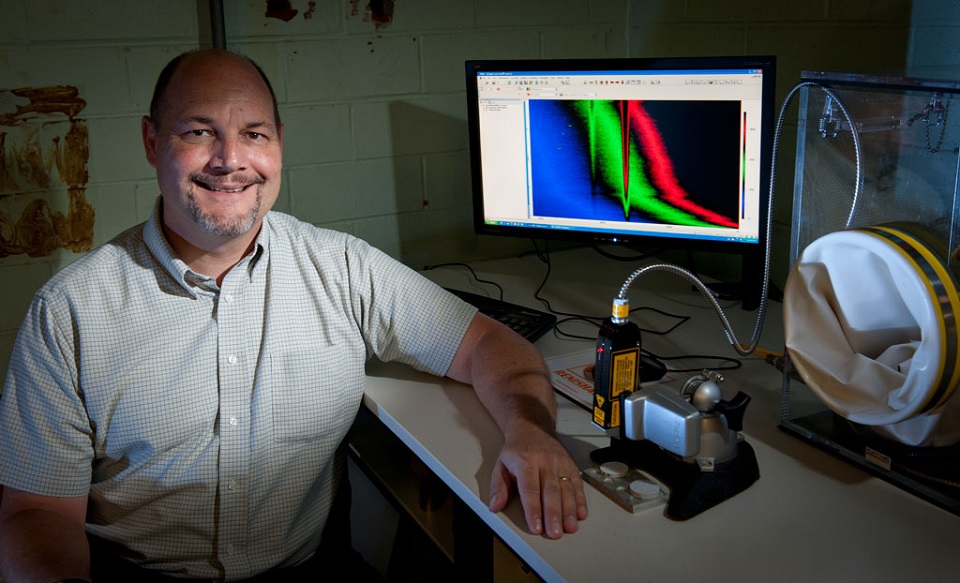
Y-12’s Eric Larson retired in February and Mike Ellis took the role of PDRD program manager.
Yeary said, “PDRD enables CNS to maintain an environment of robust technology and innovation that not only significantly improves the effectiveness and efficiency of our mission, but also attracts engineering and scientific talent necessary to ensure a future workforce capable of the unique expertise required by the mission.”
Ellis said, “We require very specific skillsets, and want to leverage the program to retain and grow our employees. PDRD provides employees an exciting opportunity and allows them to work on cutting edge technologies and ideas.”
Jennifer Palmer, Technology Transfer program manager, said, “Pantex and Y-12 have demonstrated the transformational nature of PDRD by delivering real world solutions already proven in the production environment. From implementing and scaling up next generation manufacturing systems, through the integration of robotics, automation, controls, and machine tools, the results can provide critical cost effective solutions and enable subsequent technology commercialization and adoption.”
“It’s been great to learn from Eric and Gregg,” Ellis said. “They were great mentors for me, and we have an amazing team in PDRD — that can’t be stated enough. I’m excited about the growth we’ve had for the past several years and the planned growth from now through 2028. I’m enthused to be able to participate and be an advocate for both Pantex and Y-12. We’re seeing impressive things with more great days ahead for PDRD.”
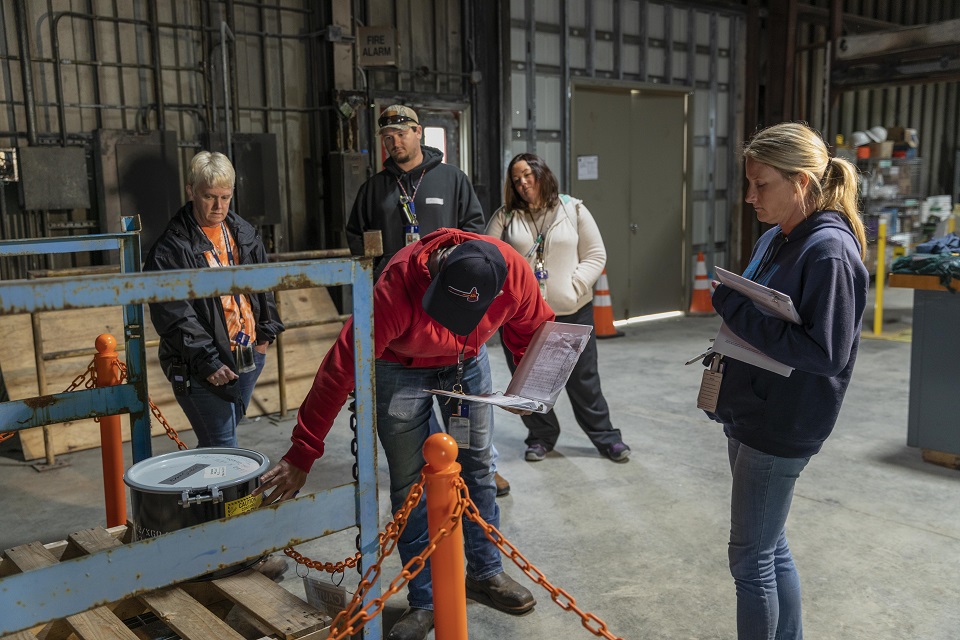
Y-12 employees participate in hands on training at the new salvage yard as part of Sustainability and Stewardship’s expanded program.
Training courses completed on the computer are often necessary, but nothing is better than getting employees into the field for actual hands on learning sessions. The Sustainability and Stewardship program had this in mind when they expanded their training and created an area in the new salvage yard to be used as a mock training space to supplement current classroom and online training courses.
“This training allows the program to be successful,” explained Donna Cozart, generator services supervisor for Sustainability and Stewardship. “The hands on approach is beneficial due to being interactive and engaging, and potential issues can be worked through at the time. It promotes confidence in the ability to perform the job successfully.”
The Sustainability and Stewardship organization establishes and maintains company wide programs and services to support environmental sustainability operations. The organization supports compliance in the plant by managing universal waste and improves the environment by reducing and diverting waste that is still generated to a recycle or reuse outlet where possible. The program also implements stewardship practices, which are the programs that take care of legacy issues and assist in preventing the formation of additional problematic areas.
In an effort to improve compliance, safety knowledge, and processes for sustainable material disposition, the salvage yard training space was born. The space is located in the original salvage yard, which is used to process materials and store low level waste. When the Sustainability and Stewardship organization realized they needed a space for trainees to get their hands dirty, they worked for months to plan, schedule, develop the training modules, and execute the new mock training within the current yard.
“Developing these modules will ultimately assist our personnel in improving their knowledge, which will in turn assist the plant in improving environmental compliance,” explained Jan Jackson, Sustainability and Stewardship manager.
The Sustainability and Stewardship program handles more than one million pounds of material, on average, each month in a variety of ways. So adding additional training preparation and execution was not taken lightly.
“The hands on training is a big time commitment,” said Jackson. “But the experience employees gain by handling material is well worth it. It also helps to strengthen our team, and supports our continuous improvement efforts and sustainability/resiliency goals.”
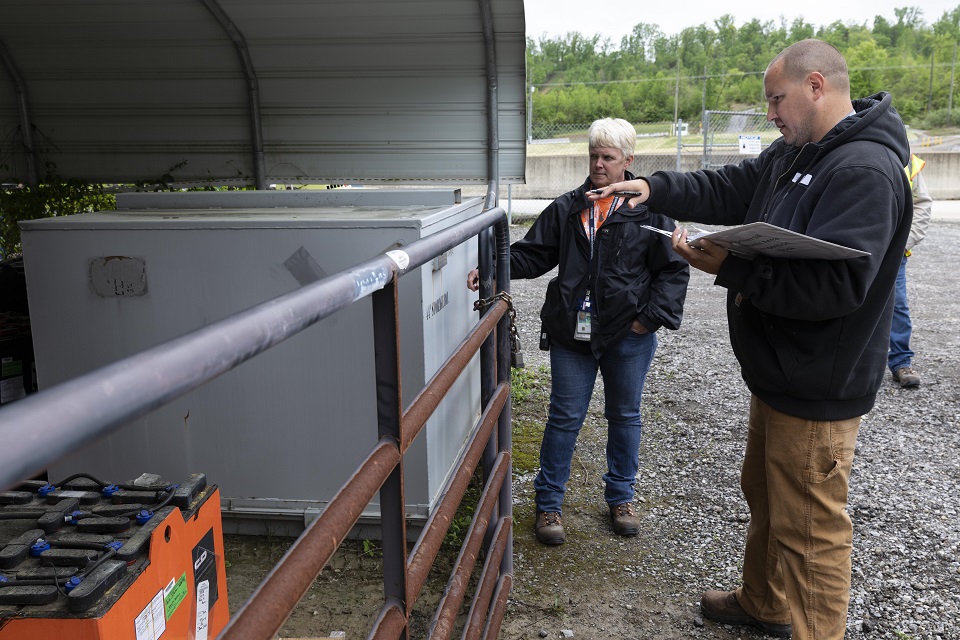
Y-12 employees participate in hands on training at the new salvage yard.
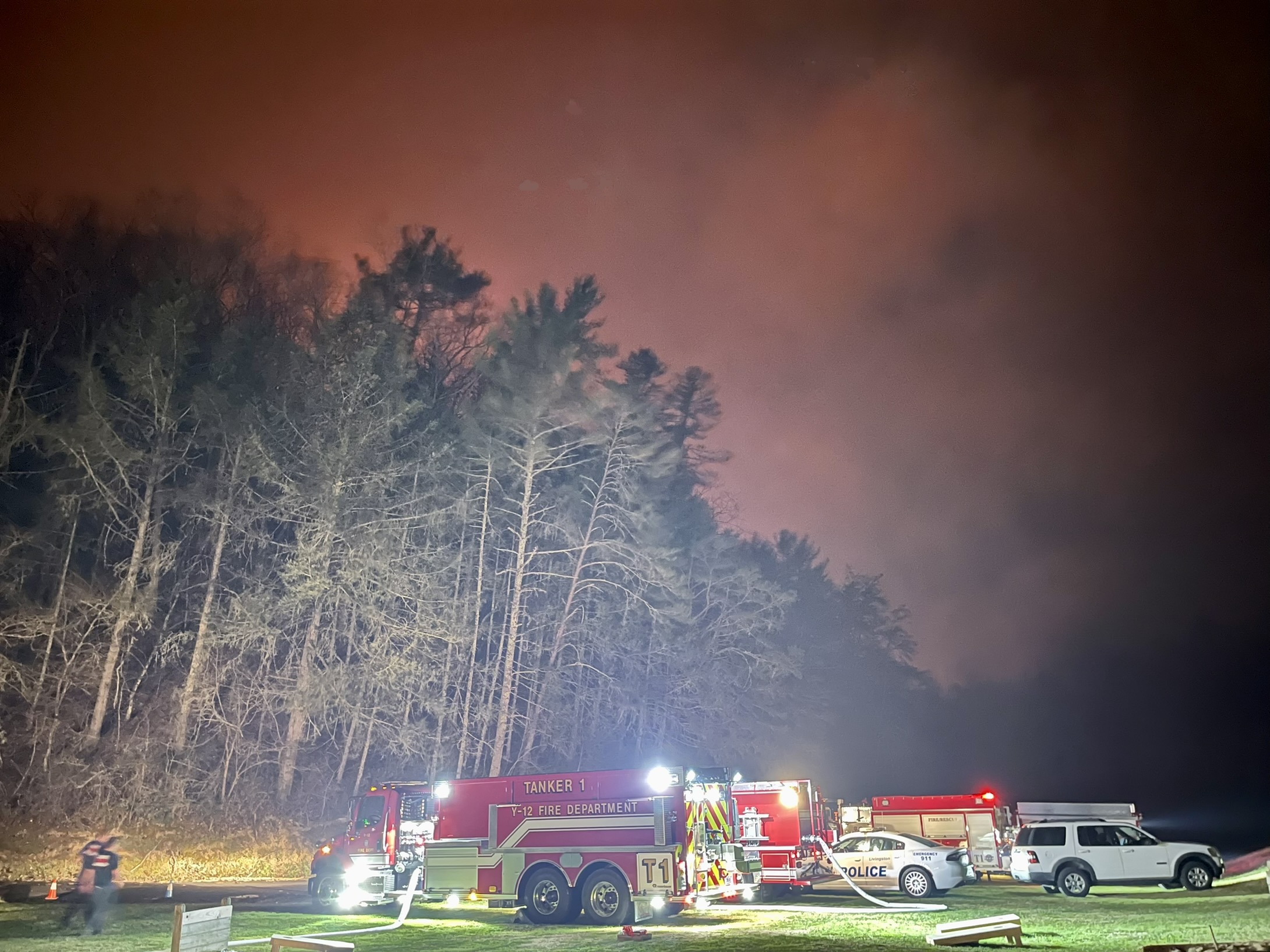
The Y-12 Fire Department sent a tanker to help contain the recent wildfires in Sevier County. The tanker supplied water to other fire departments who participated in the firefighting effort.
The effort to extinguish blazes that charred thousands of acres in East Tennessee this spring received help from a regional squad of firefighters, including members of the Y-12 Fire Department.
“It was a challenging task,” said Y-12 Fire Department Assistant Fire Chief Mari-Kaye Monday, “We supported the efforts with a team of two firefighters working 24/7 from Wednesday morning through Sunday evening.”
The Y-12 Fire Department was among hundreds of agencies that responded to Sevier County and helped contain the fires which consumed parts of Hatcher Mountain in Wears Valley and Dupont/Millstone Gap in Seymour.
The agencies came together thanks to Tennessee’s mutual-aid deployment plan, which provides resources when fires exceed the abilities of any single fire department. The plan is useful in large fires and when natural or manmade disasters overwhelm a local community’s capabilities.
The need was great when wind-driven flames quickly reached heights of 30 feet or more as they tore across the mountains.
“Our assignment was to provide water supply, using our tanker, to other fire departments who were fighting the fires with brush trucks and protecting structures,” Monday said. “We could supply multiple trucks with our 3,500-gallon capacity.”
This wasn’t the first time the Y-12 Fire Department has played a role in wildfire containment. The department also pitched in during the 2016 Gatlinburg wildfires, which burned 17,900 acres, destroyed 2,460 buildings, and took the lives of 14 people.
Mutual aid doesn’t just apply to major wildfires, however. For example, the Y-12 and Oak Ridge fire departments have a longstanding mutual-aid relationship.
“There are times when the city gets inundated with calls,” said Oak Ridge Fire Department Chief Travis Solomon. “When our guys are tied up on something major, Y-12 supplements our resources or assists us on the scene. Within the last year, we’ve called on them three or four times.”
Earlier this year, when the Oak Ridge Fire Department was on one call involving a structure fire, a crew from Y-12 responded to a kitchen fire at British Woods Apartments. The crew helped evacuate the occupant and extinguished the fire. There was no major property damage.
In another mutual-aid call, Y-12 Fire Department responded to the scene of a motor-vehicle accident on Edgemoor Road when the Oak Ridge Fire Department was handling a wildland fire on the east side of the city.
“I really appreciate Y-12 Fire being able to assist the city,” Solomon said. “And if they need our help, we are just a phone call away.”
The mutual-aid responses offer Y-12 firefighters a change of pace and opportunities to employ skills they ordinarily wouldn’t have to use on site.
“We have 97 people in the department,” Monday said. “There is a broad experience and knowledge base. To maintain our EMT and Paramedic licenses, we train on pediatric emergencies and domestic violence responses. Although we probably won’t see that on the Y-12 site, we never know what may be needed during an off-site response. Even though we are fully capable, we probably won’t be delivering many babies at Y-12.”
What is more likely are “responses that are more specific to Y-12 hazards,” Monday said. “They’re not typically the same hazards municipalities may face.”
Although Y-12’s mutual-aid ties with the Oak Ridge Fire Department are strong, they also extend to other neighboring fire departments, including at Oak Ridge National Laboratory. Monday said ORNL occasionally requests medical support, where an ambulance with a Paramedic and EMT is provided. In most mutual-aid situations, Y-12 provides engine company support, which includes a fire engine with a captain and up to three crew members.
Whether it’s a call at Y-12 or a mutual-aid situation, “We love what we do,” Monday said. “We love the challenge of not knowing what the next response will be and the responsibility to be prepared for anything.”
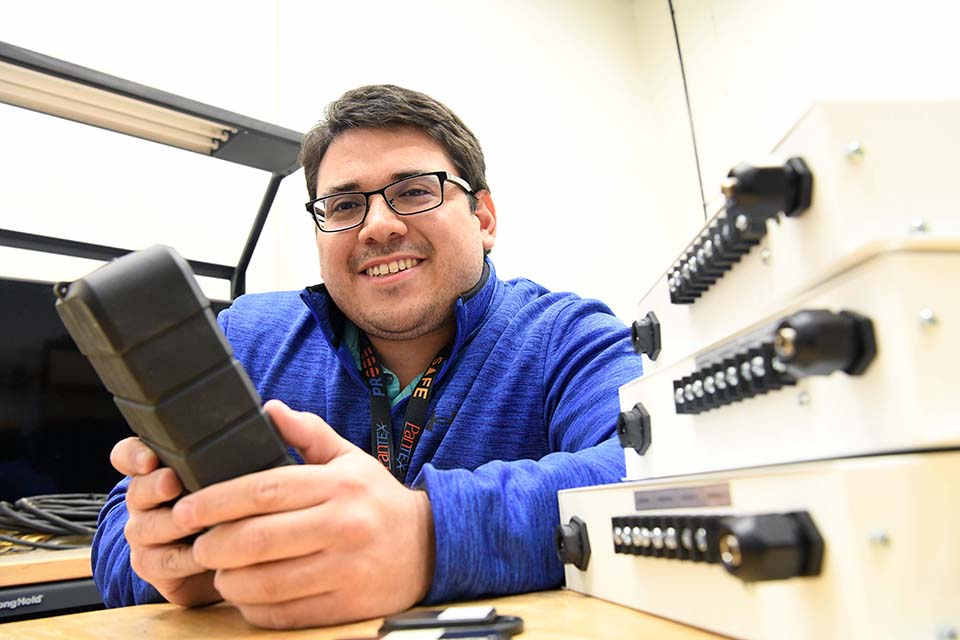
Pantex Development Engineer Paul Aguirre of the Tracking and Sensor Networks Integrated Project Team with some of the project equipment.
Engineers at Pantex are testing a new wireless tracking system that will eventually manage the location of key components such as containers, tools, and equipment across the sites. It’s a big advancement since devices that communicate wirelessly are prohibited in many locations at Pantex and Y-12.
The key to this technology is that it doesn’t use typical Wi Fi or Bluetooth frequencies, but rather operates on a separate, lower-frequency bandwidth.
Pantex Senior Director for Infrastructure Joe Boudreaux said Pantex and Y-12 are developing the system to replicate, in a security conscious manner, technology available outside the sites.
“We are seeing trackers used more and more in our personal lives to locate pets, phones, and even cars. The wireless property tracking project is designed to develop a solution to track components meeting all of our requirements for use at both Pantex and Y 12,” Boudreaux said.
The system would work by installing special antennas to tracked items. The antennas would communicate with a property tracking system. The system would provide real time locations for tracked items as well as data-reporting functions.
“We are leveraging and adapting technology used at other Department of Defense and Department of Energy sites,” said Development Engineer Paul Aguirre.
The problem with the existing systems is that locations must be manually updated, Aguirre said. The new system would prevent time wasted to track missing items and money spent replacing lost items.
“I have people in my group who have more than 70 items they have to keep track of. It’s easy to lose track or misplace items throughout the year. Hopefully, we’re going to eliminate that problem,” he said.
If all goes according to plan, testing of the new system will begin later this year followed by implementation, first at Y-12, in FY 2023.
